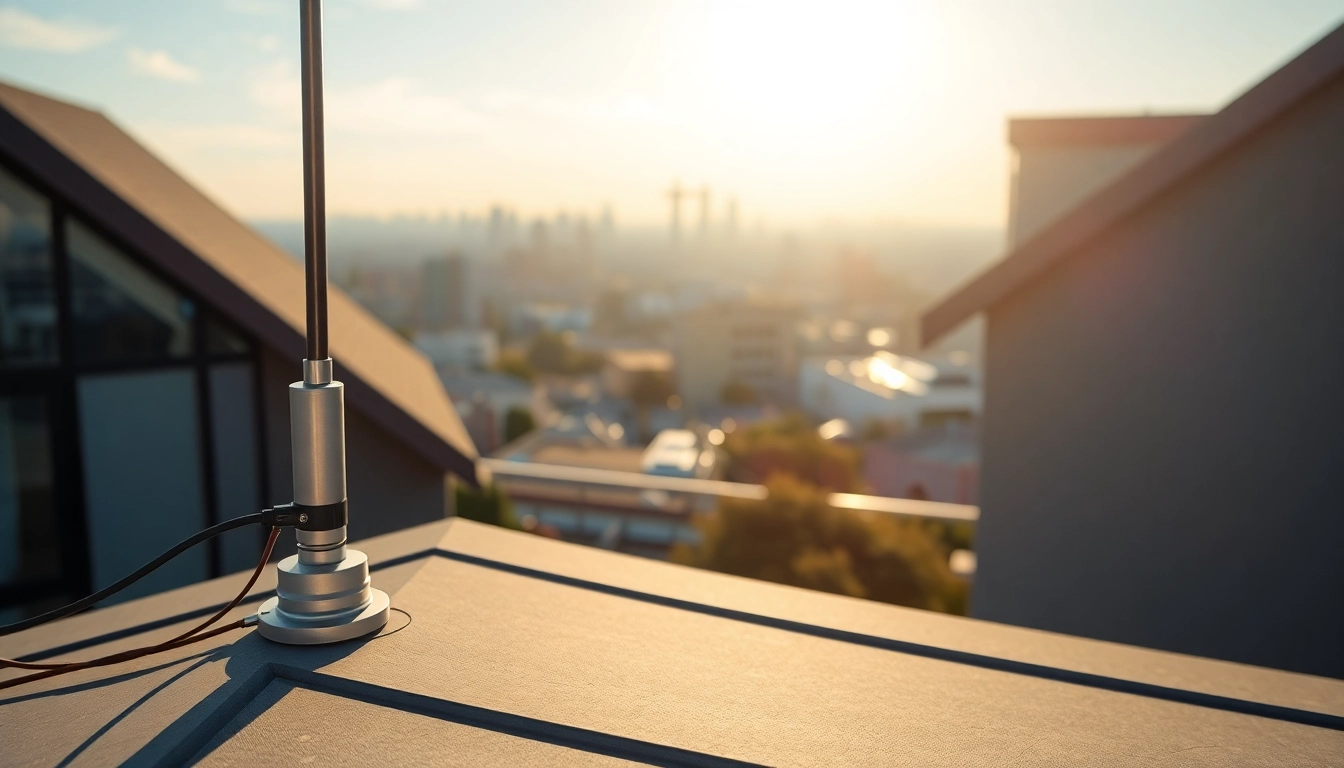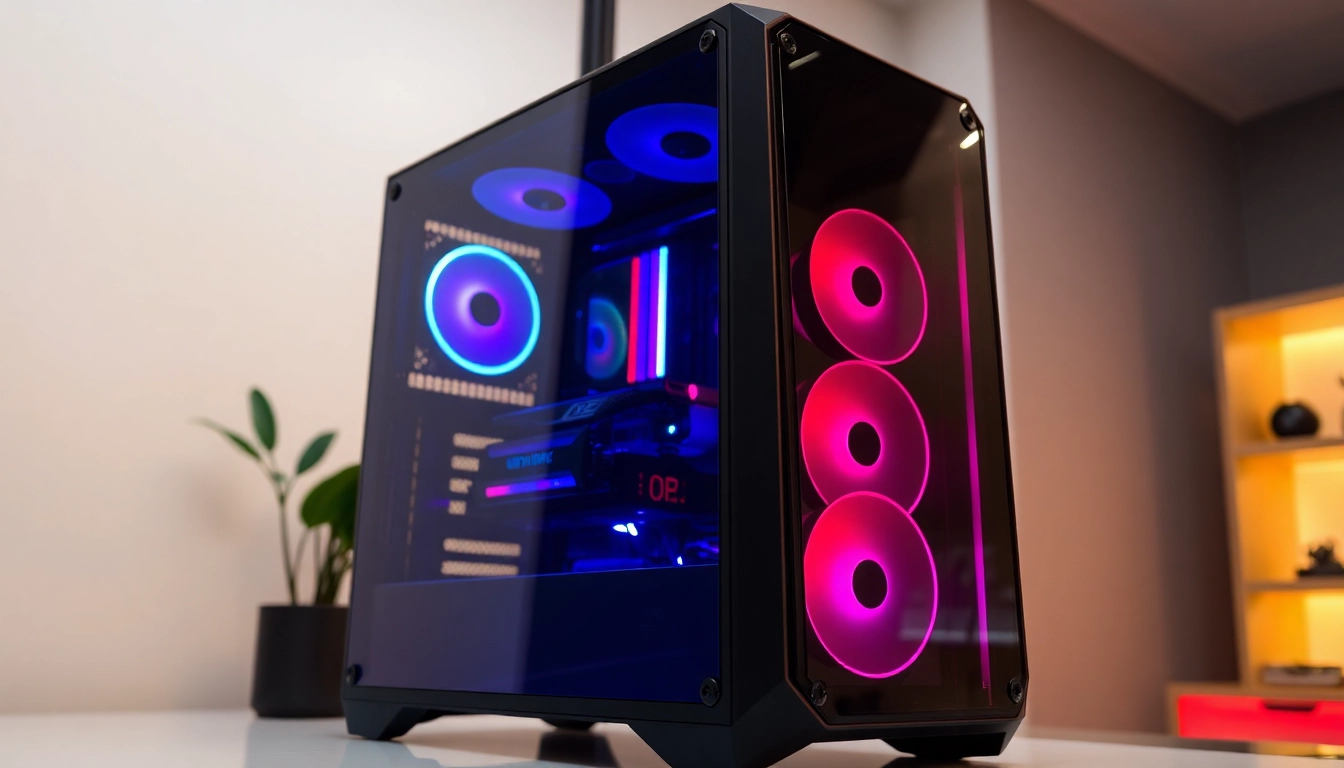Understanding Cellular Antenna Booster Technology
In today’s hyper-connected world, having a reliable cellular connection is essential for both personal and commercial use. As more devices become interconnected and reliant on wireless communication, signal strength can fluctuate significantly, especially in rural or remote areas. This is where the role of a cellular antenna booster becomes crucial. Essentially, a cellular antenna booster amplifies weak cellular signals, enabling users to enjoy seamless connectivity. In this section, we will delve into how these devices work, their components, and the different types available to consumers.
How Cellular Antenna Boosters Work
At the core of a cellular antenna booster lies a straightforward principle: boosting the existing cellular signal from mobile towers. The system generally comprises a few key components: an external antenna, an amplifier, and an internal antenna. The external antenna captures the weak signal from nearby cell towers, which is then transmitted to the amplifier. This amplifier boosts the signal strength to a usable level, allowing the internal antenna to broadcast the enhanced signal throughout the designated area.
Cellular antenna boosters typically operate across various frequencies, enabling them to amplify signals from different 2G, 3G, 4G, and even 5G networks. By ensuring that the device can handle these diverse frequencies, users can benefit from improved connectivity irrespective of their network provider.
The Components of a Cellular Antenna Booster
Understanding the components of a cellular antenna booster is vital for making an informed purchase. Here are the key elements:
- External Antenna: This component is mounted outside the building to capture incoming signals. It needs to be installed in a location where it can access the best possible signal from nearby towers.
- Amplifier: The heart of the booster, this device enhances the captured signal. It is designed for specific frequency bands and has to be installed in accordance with local regulations regarding amplification.
- Internal Antenna: This distributes the amplified signal throughout the space, whether it’s a home, office, or vehicle. Placement and design can vary depending on the coverage area required.
- Cables: High-quality coaxial cables connect the external antenna to the amplifier and the amplifier to the internal antenna. The length and quality of these cables can significantly impact the overall performance of the system.
Types of Cellular Antenna Boosters Explained
Cellular antenna boosters come in various types, catering to different needs and environments:
- Mobile Boosters: These are designed for use in vehicles, providing enhanced connectivity on the go. They are typically compact and portable.
- Home Boosters: Ideal for residential use, these systems can cover multiple rooms and connect several devices simultaneously. They usually have a broader frequency range.
- Commercial Boosters: Tailored for larger spaces such as warehouses or office buildings, these boosters can support numerous users and devices at once.
- Industrial Boosters: These heavy-duty systems are designed for challenging environments, such as factories and construction sites, where signal strength is often weak.
Benefits of Using a Cellular Antenna Booster
Investing in a cellular antenna booster comes with numerous perks that can significantly enhance the overall communication experience. Understanding these benefits can help users recognize the value of such devices.
Improved Signal Strength and Quality
The primary advantage of a cellular antenna booster is undoubtedly the remarkable improvement in signal strength. These devices can increase weak signals by as much as 32 times, which means that users can expect fewer dropped calls and faster data speeds. Improved signal quality can lead to more stable video calls, quicker downloads, and smoother streaming of online content.
Enhanced Voice and Data Connectivity
With enhanced signal strength comes an increase in voice clarity and data reliability. Users will note fewer interruptions during phone calls and better call quality, which is crucial for both personal and professional communications. Moreover, the improved data connectivity allows for seamless usage of online applications, making it easier to work from home or on the road.
Cost Efficiency and Long-term Savings
While the initial investment in a cellular antenna booster may seem significant, the long-term savings often outweigh this upfront cost. Improved connectivity can lead to a decrease in lost business opportunities due to poor signals or dead zones. Additionally, users may find that they need fewer cellular data plans or can downgrade their existing plans, leading to substantial savings over time.
Common Challenges with Cellular Antenna Boosters
Despite their numerous benefits, cellular antenna boosters can present challenges during installation and ongoing maintenance. Understanding these challenges helps users navigate potential issues more efficiently.
Installation Issues and How to Overcome Them
The installation of a cellular antenna booster can be a daunting task for many users. Common challenges include positioning the external antenna for optimal signal reception and ensuring secure cable connections to prevent signal loss. To overcome these hurdles, users should carefully read the installation manual, watch tutorial videos, and consider hiring a professional installer if necessary. Proper installation can significantly influence the performance of the booster.
Identifying Suitable Locations for Installation
Another common issue relates to finding the right spot for the system’s components. The external antenna should be installed as high as possible and away from obstructions like buildings, trees, and other objects that can hinder signal reception. Conducting a preliminary signal test with your mobile device can help identify the best location.
Maintaining Your Cellular Antenna Booster
Like any electronic device, cellular antenna boosters require regular maintenance to function optimally. Users should routinely check the connections for wear, ensure that the external antenna is clean and free from debris, and periodically test the signal to guarantee persistent efficiency. Additionally, monitoring for firmware updates from the manufacturer can also provide enhancements to performance.
Best Practices for Using a Cellular Antenna Booster
To maximize the benefits of a cellular antenna booster, users should consider following best practices that ensure optimal performance and longevity.
Choosing the Right Equipment for Your Needs
Selecting the correct type of booster is crucial. Users should consider the size of the area that needs coverage, the type of cellular signals in their location, and the number of devices that will connect to the booster. Researching product specifications and understanding individual needs will aid in making an informed decision.
Tips for Optimal Placement and Setup
Once the appropriate booster is selected, placement should be approached with care. The external antenna should be positioned to capture the strongest signal possible, while the internal antenna should be placed in a central location within the area needing coverage. Ensuring adequate space between the internal and external antennas is important to avoid signal interference.
Regular Maintenance and Performance Monitoring
Ongoing checks are necessary to maintain the efficiency of the cellular antenna booster. Users should perform regular diagnostic tests to assess the performance, clean antenna surfaces, and tighten or replace cables as needed. Keeping an eye on any variations in performance can help with early identification of potential issues.
Case Studies: Successful Uses of Cellular Antenna Boosters
Real-life examples can provide valuable insights into the effectiveness of cellular antenna boosters. By examining different scenarios, users can better understand the advantages these devices can bring to various environments.
Residential Applications and Real-Life Examples
In residential settings, many users have successfully utilized cellular antenna boosters to enhance their home networking experience. For instance, in a rural home situated miles away from the nearest cell tower, residents installed a booster that amplified weak signals and allowed them to stream content and work online without interruptions. Testimonials frequently highlight improved gaming experiences and reliability in video conferencing.
Commercial Installations Boosting Business Connectivity
Business owners often face unique challenges with connectivity, particularly in larger office spaces or warehouses. In one notable case, a manufacturing company struggled with poor cellular coverage that affected communication with logistics. By implementing a commercial cellular antenna booster, they significantly enhanced signal strength, resulting in more efficient operations and improved employee productivity. Companies report that such installations have led to increased mobility and seamless integration of communication tools.
Future Trends and Innovations in Booster Technology
The future of cellular antenna boosters looks promising, with technology continuously evolving to meet the demands of an increasingly connected world. Innovations such as smart boosters that automatically adjust their amplification levels based on current signal conditions are on the rise. Additionally, advancements in materials and designs aim to streamline installation processes and make the devices more aesthetically pleasing for residential applications.
As 5G technologies unfold, cellular antenna boosters are expected to adapt, providing even better coverage and speeds. This evolution means that consumers will have access to enhanced communication tools that can keep pace with their changing needs. The role of cellular antenna boosters in modern communication continues to expand, helping users stay connected in various environments.



